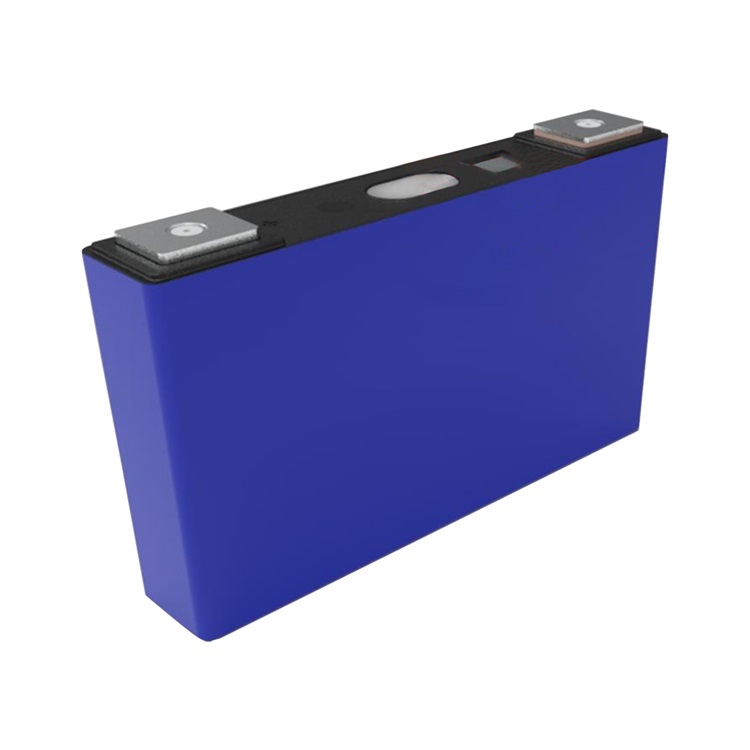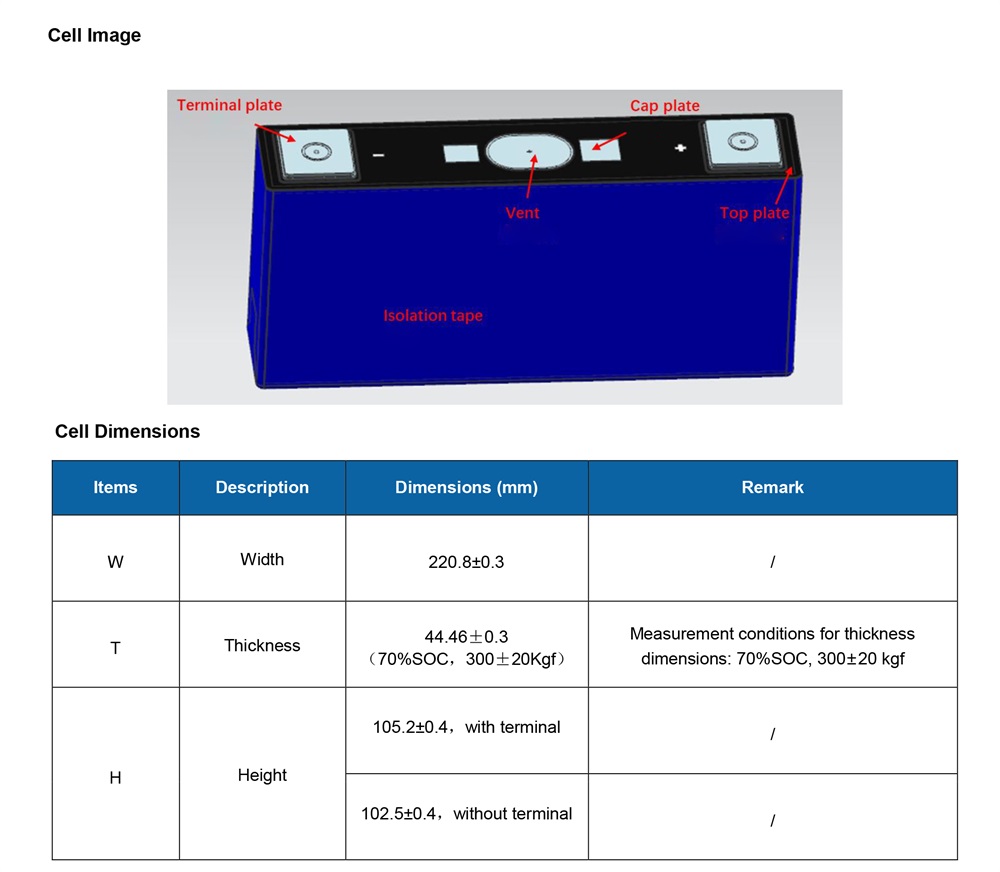|
Product Details:
|
| Nominal Capacity: | 147Ah | Nominal Voltage: | 3.7V |
|---|---|---|---|
| Internal Impedence: | / | Operating Votage: | / |
| Dimension: | 220.8*44.46*105.2mm | Battery Weight: | 2.34±0.025kg |

CALB 3.7V 147Ah Lithium nickel manganese cobalt oxide battery (NMC 811) Ternary Prismatic Cell, CE, UL, MSDS, and UN38.3 have been approved.
3.7V 147Ah L221N147A CALB NMC battery cells were already passed all safety tests(overcharge, over-discharge, over-temperature, short circuit, drop, crush, needle puncture tests, etc.).

Parameters:
Items | Parameter | Remarks |
Rated Capacity | 147Ah | 1C Discharge |
150Ah | Standard Discharge | |
Rated Voltage | 3.71V | 1C Discharge |
3.76V | Standard Discharge | |
Rated Energy | 545.37Wh | 1C Discharge |
564.00Wh | Standard Discharge | |
Mass Energy Density | 241Wh/kg | Standard Discharge |
AC Impedance Resistance | <0.4mΩ | 70%SOC, Room Temperature |
Temperature Range | Charging | -20~55°C |
Discharging | -30~55°C | |
Storage | -40~60°C | |
Fast Charging Time | ≤20 min | 30-80% SOC |
Voltage Range | 2.8~4.35V | 0℃≤T≤55℃ |
2.5~4.35V | -30℃≤T<0℃ | |
Dimensions | 220.8*44.46*105.2mm | |
Cell Weight | 2.34±0.025kg |
Power:
Temperature | Power (W) | ||||||
Duration time | 5% SOC | 20% SOC | 50% SOC | 80% SOC | 95% SOC | ||
25°C | Discharge | 10sec | 650 | 2008 | 2639 | 2747 | 2812 |
Charge | 10sec | 1497 | 1470 | 1384 | 1123 | 223 | |
0°C | Discharge | 10sec | 181 | 828 | 1646 | 1982 | 2147 |
Charge | 10sec | 684 | 543 | 500 | 295 | 101 | |
-20°C | Discharge | 10sec | 105 | 349 | 873 | 1281 | 1524 |
Charge | 10sec | 204 | 178 | 128 | 64 | 36 | |
CALB Cell Testing:
1) If the pole becomes dirty before use, wipe it with a dry cloth. If it cannot be cleaned, the surface of the pole column needs to be polished with sandpaper to remove the oxide layer to prevent poor contact and affect the current carrying capacity.
2) When using the connecting piece to connect the battery, it is recommended to use the aluminum connecting piece, and ensure that the voltage drop generated at the contact position is less than 3 mV, otherwise there may be a large problem of heating due to the high contact impedance.
3) The battery test room shall be kept dry and ventilated, and warning signs shall be posted in an eye-catching position. It is not allowed for everyone to enter and contact the battery and other live parts.
4) During the electrical performance and safety performance test, only testers can stay in the area designated by the test, and others are not allowed to enter. Real time data monitoring of the battery must be maintained during the test. Fire fighting tools, ventilation system and fire alarm are required in the test area.
5) After the battery test, the pole needs to be covered with insulating tape.
6) The scrapping of test batteries must comply with local environmental regulations.
Battery Charge and Discharge:
1) The battery needs to be charged with a special or designated charger and is only used in professional fields.
2) The battery charging and discharging voltage and maximum charging and discharging current are not allowed to be set outside the scope specified in the specification. Overcharge, over discharge and reverse charging are prohibited. When the charge and discharge reach the cut-off voltage or current, the charge and discharge must be stopped. If the battery does not complete charging within the specified time or capacity, stop charging.
3) The battery management system shall be installed on the battery to prevent the occurrence of overcharge and discharge of the battery, so as to avoid the scrapping of the battery and potential safety hazards.
4) When the battery is stored for a long time, in order to prevent over discharge caused by self discharge, it is necessary to charge the battery regularly to keep the battery at a state of charge of more than 20%. If the battery is to be stored for a long time, it should be removed from the electrical equipment and transferred to an environment suitable for storage.
5) Before using the battery, it’s necessary to fully read the user manual of the battery or equipment.
6) When the battery is not used for a long time and the battery cannot be charged, stop using and consult the manufacturer's after-sales service.
Contact Person: Miss. Elsa Liu
| WhatsApp : | +8617763274209 |
|---|---|
| Skype : | +8617763274209 |
| WeChat : | 17763274209 |
| Email : | Elsa@lifepo4-battery.com |